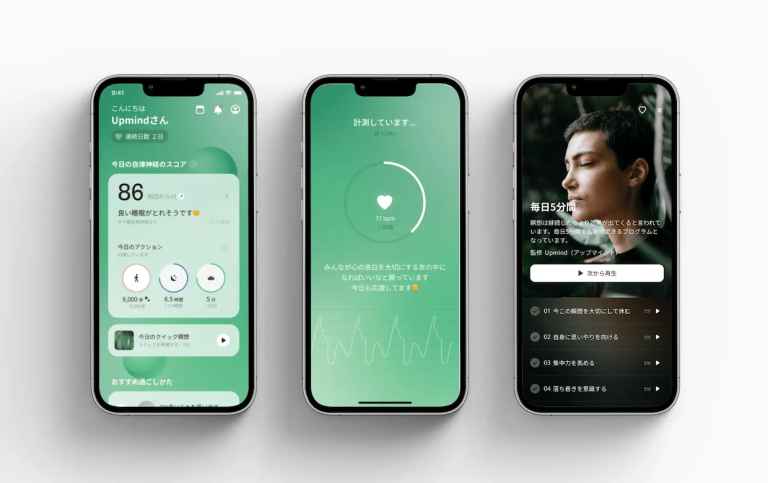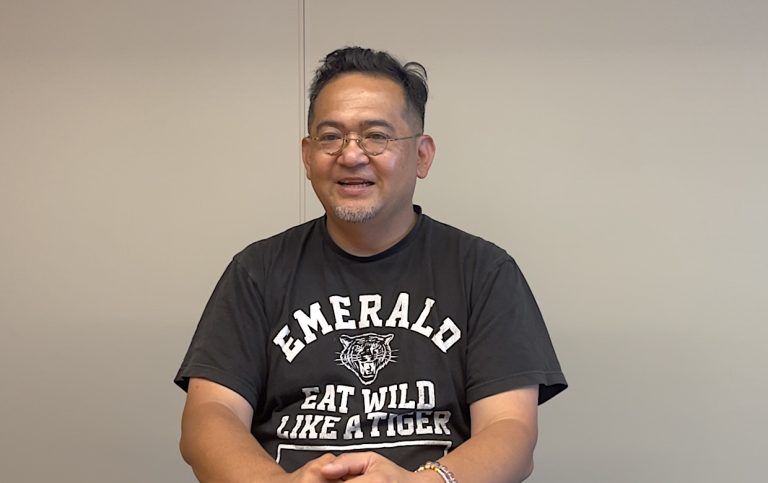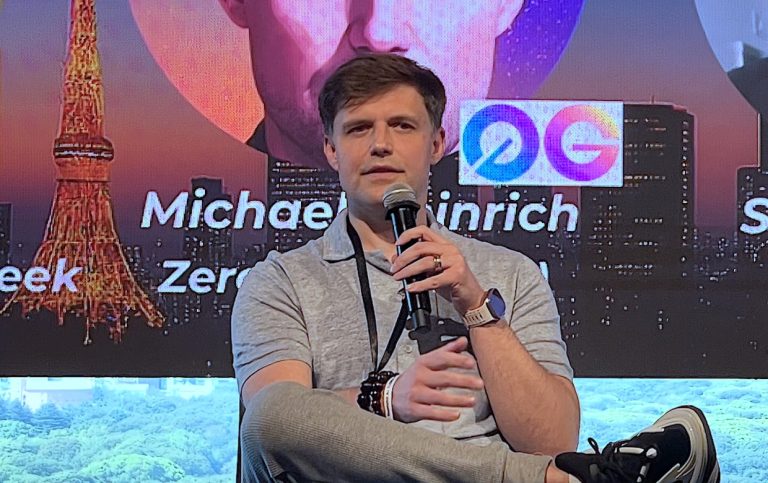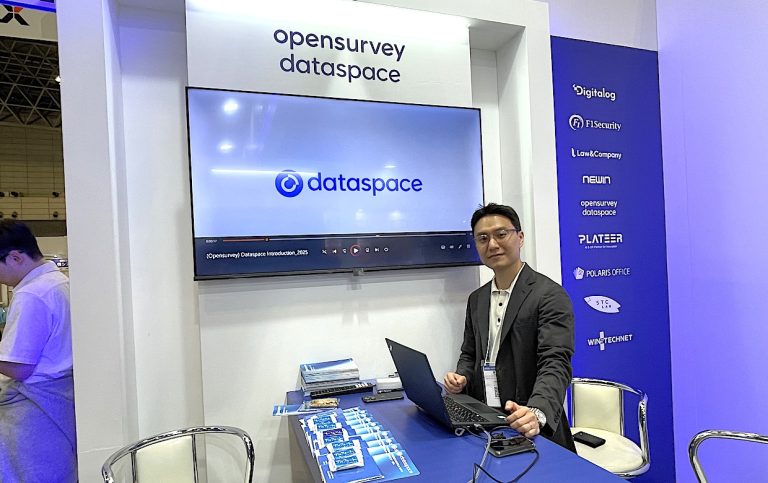
In early June 2025, Wavelet, a startup spun out of the University of Tokyo, reached a new turning point. Tomoyuki Iwamoto, who became CEO in November 2024, is a business professional with extensive experience in energy business at a major trading company.
Approximately three years since its founding in July 2022, the company has been accelerating its business expansion with an eye toward the full-scale implementation of carbon dioxide capture and storage (CCS) projects. Their weapon of choice is PASS (Portable Active Seismic Source), a revolutionary technology that enables seismic exploration using a compact device weighing just 1 to 5 kilograms, replacing conventional large trucks.
The Japanese government has set an ambitious target to store 120 to 240 million tons of CO₂ annually by 2050. This represents approximately 10-20% of Japan’s current annual CO₂ emissions. Achieving this goal requires accurate understanding of underground structures and long-term monitoring, and Wavelet’s technology holds the potential to be key to solving these challenges.
Iwamoto’s appointment as CEO came from the need to strengthen the business side of operations. Founder Akihisa Takahashi has assumed the role of Chairman of the Board, while Professor Takeshi Tsuji from the University of Tokyo continues to lead the technical aspects as Chief Science Officer (CSO). This new structure has created a framework to accelerate growth through both technological prowess and business acumen.
Substituting Survey Scale with Repetition
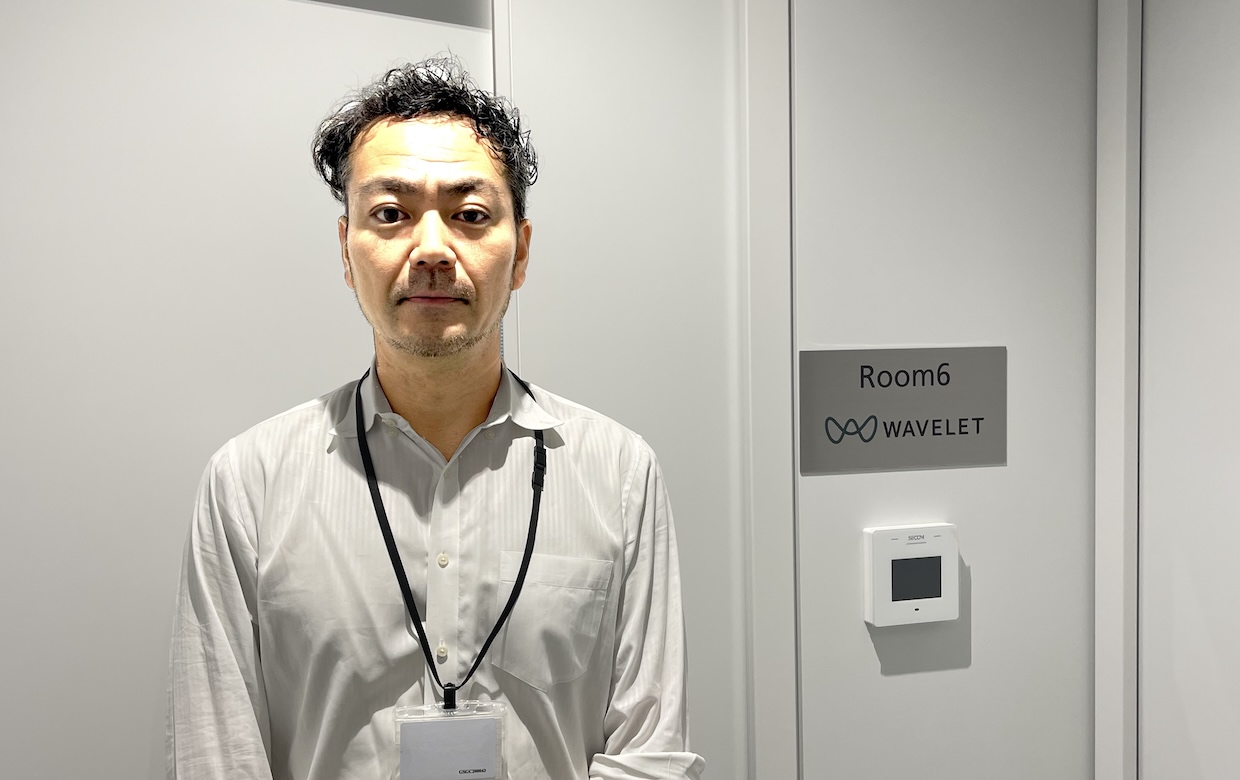
When hearing the term “seismic exploration,” many people might think of earthquake observation. However, what Wavelet is working on is “active” exploration technology that artificially creates vibrations to investigate underground structures. This technology has a long history, having been widely used in oil and gas exploration since the 1970s.
Conventional seismic exploration has been dominated by large trucks called vibroseis. These seismic source vehicles emit frequency-swept vibrations (sweep waves) into the ground and estimate underground structures by observing the reflected waves at the surface.
However, this method had significant limitations: exploration was impossible in areas inaccessible to equipment, noise problems, environmental impact, and above all, high costs.
PASS, developed by Professor Takeshi Tsuji and his team at the University of Tokyo’s Graduate School of Engineering, reduces operational costs by miniaturizing the seismic source to a size that humans can carry, making it possible to transport the device to mountainous areas where conventional large seismic trucks cannot reach.
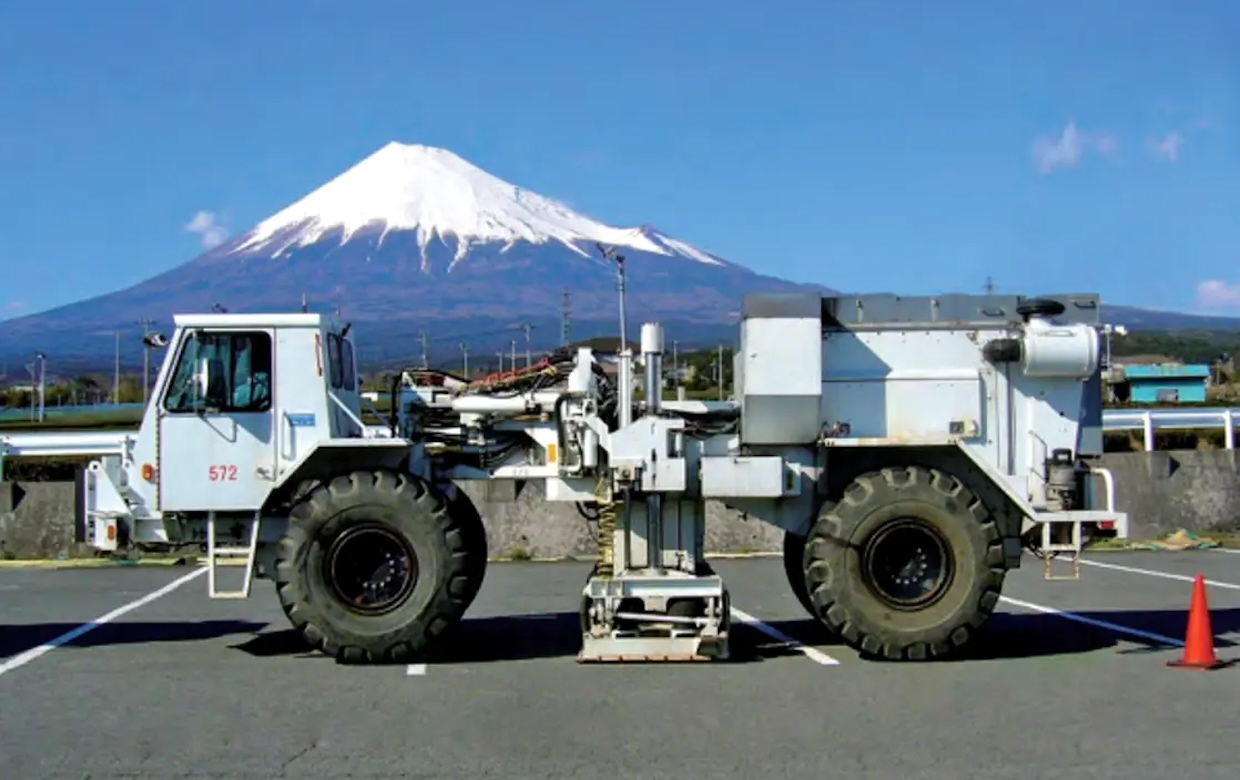
Image credit: Wavelet
The device’s mechanism is surprisingly simple. Inside the box are a motor and weights that rotate regularly, transmitting vibrations to the ground. By measuring how these vibrations propagate underground—their angles and velocities—the underground structure can be imaged.
While seismic waves include P-waves (longitudinal waves) and S-waves (transverse waves), PASS is particularly effective at generating S-waves. The velocity distribution of these S-waves has been found to correlate highly with the N-value (an indicator of ground hardness) important in civil engineering, making this technology promising as an alternative to conventional boring surveys.
More importantly, PASS can grasp underground structures as an “area” rather than a “point.” While boring surveys provide “point” information from a single hole, PASS can visualize underground structures as an “area” from multiple measurement points.
While a large truck might complete an exploration with about 20 vibrations in 20 minutes, we repeat vibrations hundreds of times over several hours. Each individual vibration is weak and would normally be lost in surrounding noise, but by continuing hundreds of times, the noise is removed, and we can accurately capture only the vibrations transmitted from PASS. (Iwamoto)
This technique is known as “stacking” in signal processing. By superimposing the same signal repeatedly, random noise cancels out while the target signal is enhanced. Through this method, even a compact device can achieve exploration capabilities comparable to large trucks.
The device comes in various sizes depending on the application, from 1 kilogram to 5 kilograms, prepared according to customer needs. Larger devices are used for deeper exploration, while smaller ones suffice for shallower surveys. This flexibility is another advantage over conventional large trucks.
Strategic Partnership with Indonesia
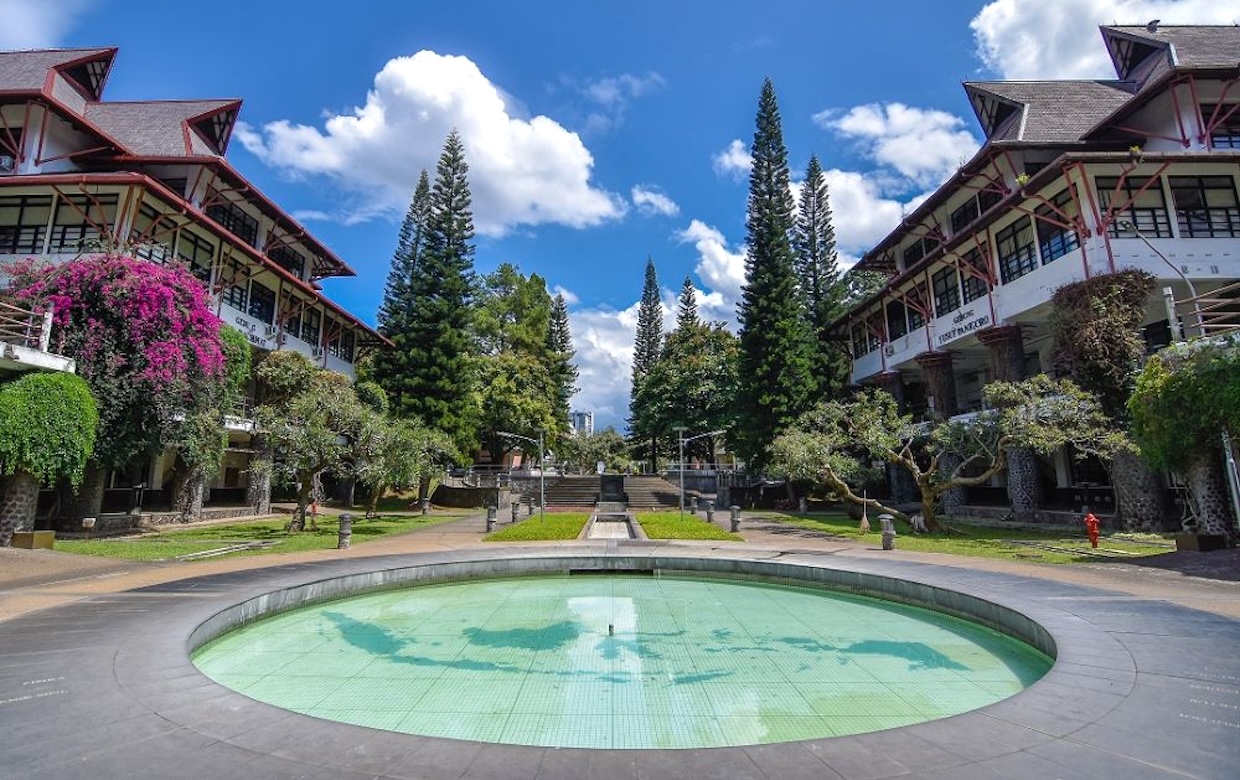
Photo credit: Institut Teknologi Bandung
One of Wavelet’s distinctive strategies is its close partnership with Indonesia. Why Indonesia? The reasons lie in both the talent pool of engineers and the potential as a future CCS market.
The company has built a cooperative relationship with Institut Teknologi Bandung (ITB), Indonesia’s premier science and technology university, advancing local talent recruitment and business development. Founded in 1920 as Indonesia’s first technical higher education institution, ITB has approximately 22,000 students. Indonesia’s first president, Sukarno, was also an alumnus.
Indonesia is a volcanic country rich in oil and natural gas. Consequently, universities have established numerous departments for petroleum engineering and geophysical exploration. In Japan, where oil resources are scarce, such departments are few, and the number of engineers is limited. Indonesia has a large pool of engineers.
Professor Tsuji, one of the founders, had been in contact with ITB faculty since his time at Kyoto University, which led to this cooperative relationship. Currently, Wavelet employs talented ITB graduates and is deepening academic-industry collaboration by enrolling them in the university’s master’s program for further training—creating a unique model that combines talent development with practical work while paying salaries.
Indonesia has many fields where oil and natural gas extraction has already been completed. They now want to develop a business storing carbon dioxide in these fields. They aim to become Asia’s CCS hub. This is an ambitious strategy to transform from a resource country to an environmental business country. (Iwamoto)
In fact, Iwamoto traveled to Indonesia during the Golden Week holiday in May 2025 and held discussions with the country’s state oil company. They proposed potential collaboration, and they are exploring specific partnership possibilities.
Wavelet’s talent strategy is progressive for a Japanese deep-tech startup. Currently operating with 11 members, all technical staff except Iwamoto, the company plans to further internationalize. While there is currently one Indonesian staff member, they plan to increase this number, focusing on hiring analysts.
I don’t think it’s necessary to have only Japanese employees. Since meetings will likely be in English in the future, I’m encouraging those who don’t speak English now to take daily English conversation lessons, with the company covering the costs. (Iwamoto)
Diverse Business Possibilities

Image credit: Wavelet
Full-scale CCS business implementation will take time. While aiming for commercialization by 2030, there’s still a 3-4 year preparation period needed. Therefore, Wavelet is focusing on applications in civil engineering, particularly where there’s significant demand in renewable energy infrastructure construction.
When building wind power plants, especially offshore wind farms, large substations called interconnection substations are needed to house massive transformers. These sites can span 50-100 meters square, and conventional methods require about 10 boring surveys. In mountainous areas, including equipment transportation, each boring costs 1-1.5 million yen, totaling 15 million yen.
However, by combining PASS with these surveys, boring surveys can be reduced from 10 to just 1. By cross-referencing with boring core data, underground structures can be understood areally. The ability to see areas rather than points is a major advantage, reducing costs from 15 million yen to several million yen.
Concrete project consultations are coming from wind power manufacturers and operators, and specific negotiations are progressing with high expectations for cost reduction through PASS.
Interestingly, these projects also help build PASS’s track record. While PASS survey results aren’t fully approved at present, by conducting boring surveys in parallel and submitting the documentation to the Ministry of Economy, Trade and Industry, they can build up their achievements.
Applications in solar power plant construction are also important. PASS technology is particularly useful for construction quality control. When clearing mountains for solar plants, felled trees should be removed from the site, but some contractors cut costs by burying trees directly and covering them with soil. Insufficient compaction of embankments can lead to washout risks during heavy rain.
PASS exploration can detect such inappropriate construction. If the soil is uniformly consistent, velocities should be constant. If velocities slow down or speed up somewhere, it might indicate foreign objects. This is expected as a new method for confirming civil engineering integrity.
There’s also strong interest from the geothermal power sector. Despite having the world’s third-largest geothermal potential, Japan’s development has been limited. One reason is the difficulty of exploration. Geothermal power is often located in volcanic areas where the underground is filled with solid volcanic rock. Finding faults is crucial because heat rises from underground along fault fractures, making fault discovery and targeted drilling key to success.
Conventional large trucks for surveys couldn’t enter national parks due to regulations and lack of roads. However, PASS can be disassembled and carried by 3-4 people along mountain trails. By setting up and taking shots at various points, seismic exploration data previously unobtainable can now be collected.
Addressing aging infrastructure is also important. Infrastructure built during Japan’s rapid economic growth period is reaching renewal time, requiring efficient methods to survey its integrity. For aging sewer pipe surveys, while conventional ultrasonic exploration is limited to 1-2 meters underground, PASS can see about 10 meters deep. This ability to detect anomalies at greater depths can help prevent collapse accidents.
From a disaster prevention perspective, the importance is high. The technology can be used for ground integrity checks after earthquakes, such as safety confirmation at the Tomakomai CCS demonstration facility after the 2018 Hokkaido Eastern Iburi earthquake. Furthermore, in resource exploration fields like hot spring development, the presence of water in rocks might be estimated from P-wave and S-wave velocity distributions.
Global Market Expansion through AI and Platform Strategy
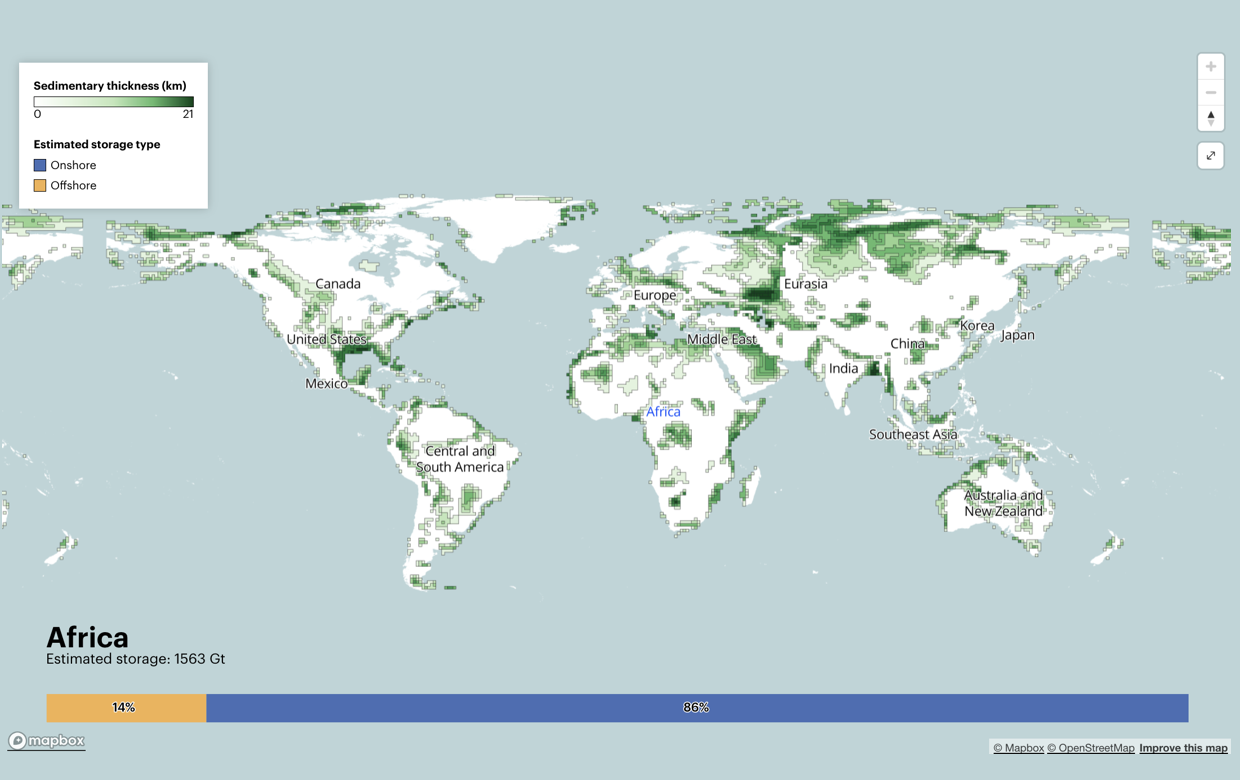
Image credit: International Energy Agency
Sources: Kearns, J.et al., (2017), Developing a Consistent Database for Regional Geologic CO₂ Storage Capacity Worldwide.
Sedimentary thickness serves as an indicator of the theoretical potential of CO₂ storage sites. The offshore capacity estimates exclude sites in water depths of more than 300 meters and more than 300 kilometers offshore. The Arctic and Antarctic regions are also excluded.
Wavelet aims to become not just an exploration equipment manufacturer but a data analysis platform provider. For future growth, the company emphasizes data analysis automation and AI utilization.
They are developing an AI-based automatic analysis system, envisioning a platform business model where PASS is rented globally, local operators collect data, and Wavelet automatically analyzes and provides feedback.
We’ll create distributors in countries worldwide and provide PASS systems on rental. We’ll teach them everything about usage, turning data collection and operation methods into applications. They’ll send us only the collected data, and we’ll automatically analyze and provide feedback. With minimal personnel, we want to build a business model where we rent out devices continuously and receive many analysis requests. (Iwamoto)
According to Grand View Research data, the global civil engineering market is predicted to reach $13.7 trillion (approximately 2,000 trillion yen) by 2030. For this massive market, Wavelet’s scalable business model holds great potential. Creating distributors in various countries, lending PASS systems, and providing data analysis services as a platform strategy is a realistic approach to challenging the global market with limited personnel.
By turning data collection and operation methods into applications, local personnel can work with the same know-how as Wavelet. They plan to monetize by charging around 300,000 yen per analysis after receiving results and providing feedback through automated analysis systems.
Currently, the company most needs a CTO (Chief Technology Officer). They seek someone who understands all technical aspects, can indicate technical development directions, and lead the technical team. Candidates are limited as they need to understand geophysical exploration as well as electrical and mechanical development, but they aim to acquire excellent talent regardless of nationality.
Wavelet’s global expansion strategy first focuses on CCS business in the United States. CCS is already established as a business in America, with over 100 CCS projects planned, leading the onshore CCS industry. CCS monitoring seismic exploration requirements are vaguely described as “once every few years,” with actual frequency determined through discussions between operators and the Environmental Protection Agency (EPA). The reason for these lengthy intervals is the high cost of exploration. With Wavelet’s technology, monitoring costs can be drastically reduced, enabling more frequent monitoring. This is expected to improve safety and enhance social acceptability.
Expanding Possibilities to Seabed CCS
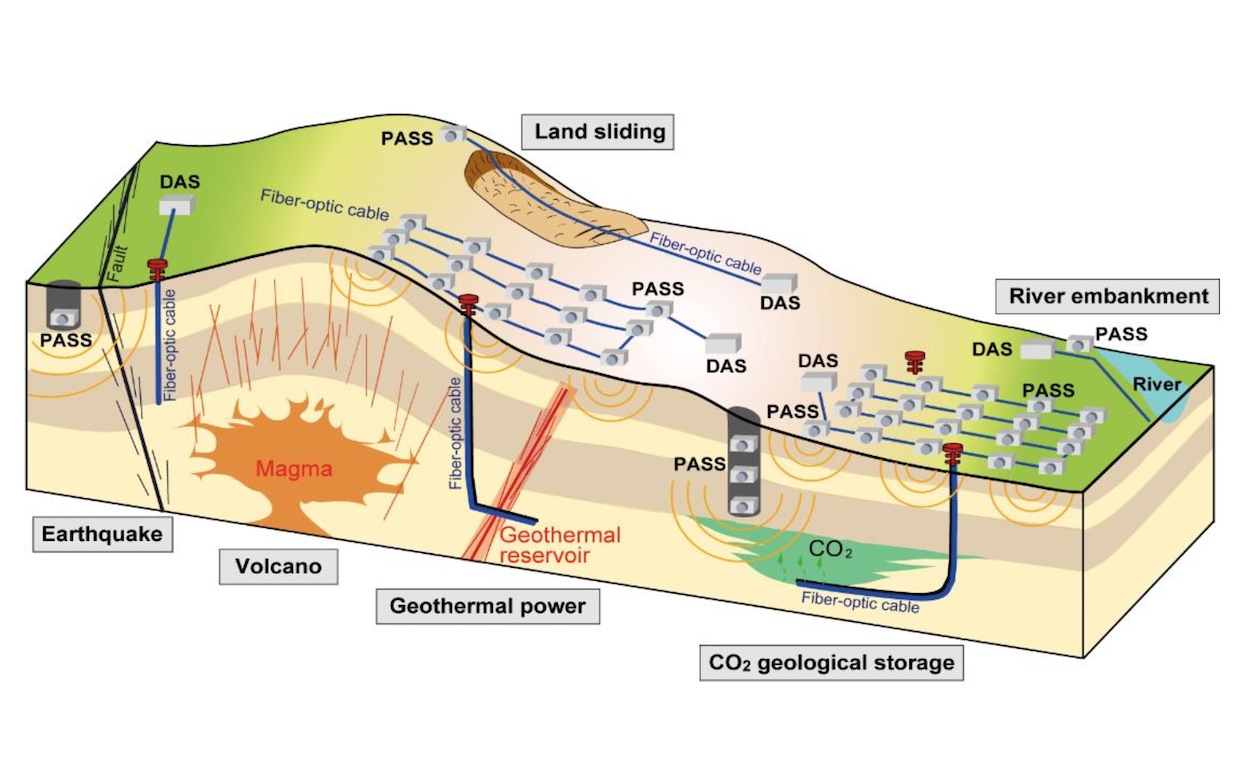
Image credit: Takeshi Tsuji’s lab, The University of Tokyo
The more immediate challenge is developing seafloor exploration technology. Since Japan’s CCS is expected to center on marine areas, establishing seabed exploration technology is unavoidable. Japan has limited onshore storage potential, so CO₂ will need to be stored beneath the seabed. Vibration propagation differs underwater from on land, and while there are many technical challenges including waterproofing devices and seabed installation methods, this must eventually be realized.
We haven’t tried seabed exploration yet, but we’ll need to do it in the future. Because Japan’s CCS will probably center on marine areas. Japan has limited onshore storage potential, so I think CO₂ will be stored beneath the seabed. (Iwamoto)
Wavelet emphasizes building ecosystems with various partners rather than growing alone. Collaborations with major real estate companies and oil contractors are already progressing. In urban areas particularly, accurately understanding underground utilities and ground conditions is important, creating significant demand.
If Wavelet succeeds commercially, it could contribute to improving Japan’s industrial competitiveness. While Japan is said to lack resources, it can lead the world technologically. PASS was only possible through Japan’s precision machinery technology. By exporting this technology globally, Japan can create new industries.
Technical superiority in the CCS field is particularly important. The global CCS market is predicted to grow from $3.54 billion in 2024 to $14.51 billion by 2032. If Japanese companies can take technological leadership in this growing market, it represents a significant business opportunity. Wavelet is considering future efforts to establish PASS-based exploration methods as international standards through ISO and JIS standardization.
The vibrations created by the small PASS device are certainly weak. But by repeating these vibrations thousands of times, deep underground structures become visible. Our business is the same. Each achievement might be small, but I believe that by accumulating them, we can create a major social transformation. (Iwamoto)
Founded in 2022, Wavelet is still a young company just entering its fourth year. However, its technological potential and globally-minded management strategy demonstrate new possibilities for Japanese deep-tech startups. Combining not just technological capabilities but also global talent strategies and scalable business models, they’re challenging the global market with limited resources.




